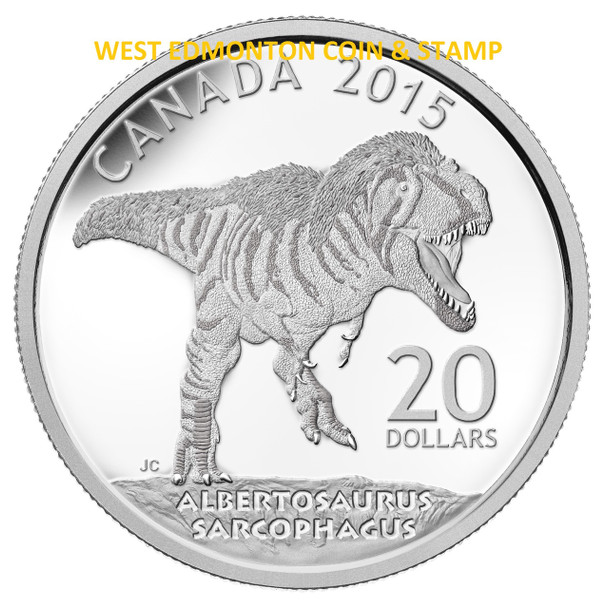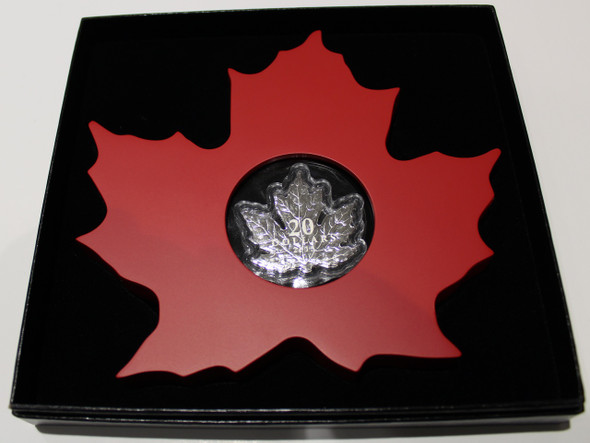Description
Albertosaurus sarcophagus resided in what is now western Canada during the Late Cretaceous, between 72 and 68 million years ago. Resembling a slender, long-limbed Tyrannosaurus rex (a closely related species that emerged several million years later), Albertosaurus sarcophagus bore a large head, sharp teeth, long tail, and tiny two-toed forelimbs.
PRODUCT SPECIFICATIONS
SRP: $89.95
Item Number: 130634
UPC: 6-23932-05797-5
Composition: 99.99% pure silver
Mintage: 8,500
Weight (g)*: 31.39
Diameter (mm): 38
Face Value: $20
Finish: Proof
Edge: Serrated
Artist: Julius Csotonyi
Packaging Maroon clamshell with black beauty box
SPECIAL FEATURES
- The fourth and final coin in the Royal Canadian Mint’s Canadian Dinosaur series features the fearsome Albertosaurus sarcophagus.
- This intricately scaled design has been enhanced with multiple finishes, giving a lifelike appearance to the dinosaur.
- The scientific accuracy of the Albertosaurus sarcophagus depiction has been verified by palaeontologists at the Royal Tyrrell Museum of Palaeontology.
- Perfect for science lovers and those who enjoy dinosaurs, prehistoric life, and Canadian history.
DESIGN
The reverse image by Canadian artist Julius Csotonyi features an interpretation of how Albertosaurus sarcophagus may have looked. Presented from the left side in three-quarter profile, this full-body portrait showcases the ancient carnivore’s most fascinating traits. The beast’s large head is topped with ridge-like horns above its small side-placed eyes. The massive mouth is wide open, presenting the dinosaur’s generous rows of sharp, jagged teeth and widely hinged jaw. A short but muscular S-curved neck leads to a thick body with reduced forelimbs bearing two clawed digits and long, powerful hind legs standing on large three-toed feet. In the background, a long tail counterbalances the large head. In this depiction, Albertosaurus sarcophagus is portrayed with filamentous feathers or proto-feathers running along the back of the animal and lining the back of each forelimb. The rest of its scaly body surface is densely pebbled—an element skillfully portrayed in exceptional detail by Royal Canadian Mint engravers. The scientific accuracy of this depiction has been verified by palaeontologists at the Royal Tyrrell Museum of Palaeontology.






